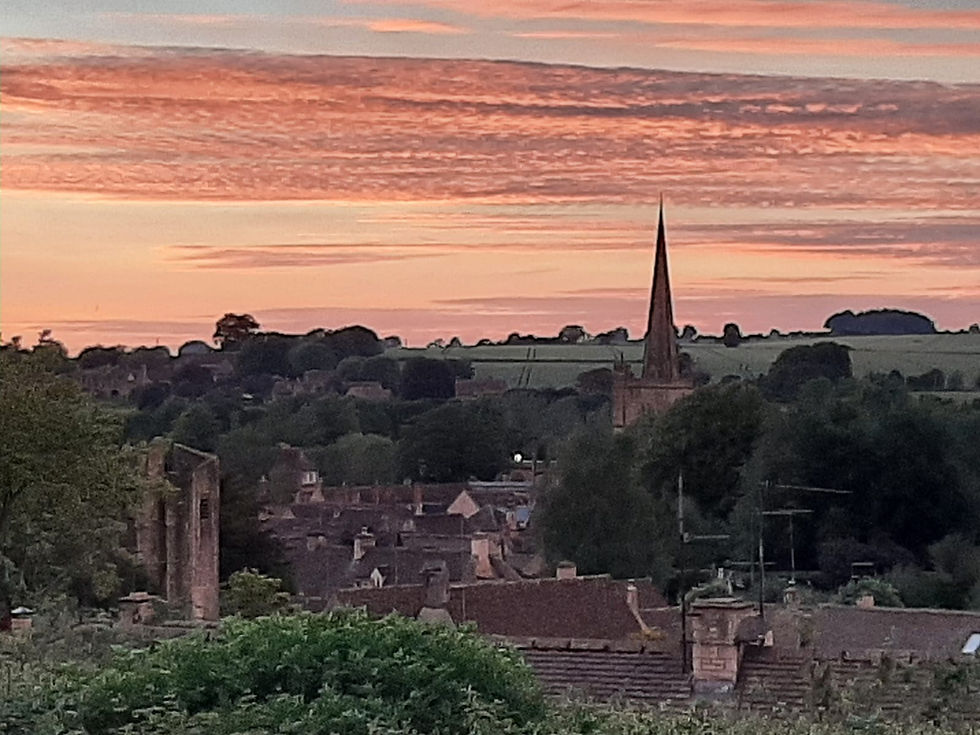Burford and District Society Half Century
- The Bridge Burford

- Jul 3, 2019
- 4 min read

Is it really fifty years since the Burford Society was founded? We had only been here about ten years then, and I was rather younger. But the themes of Burford's concern were very much as they are today even if the people were different. Traffic and planning have never ceased to dominate, and both of them raise the need to preserve the special quality. of Burford. As I remember it, Dr Eager was a moving spirit in the birth of the Burford Society. He was our family doctor when we came and his surgery was in those cottages that face up the hill. What a link with the past! Thomas Cheatle came here as assistant to Dr Lionel Beale in 1819 in the days of the Regency. In 1834 he was well enough established to buy Riverside House that has only in the last half dozen years been sold by the family. He was followed in the practice by his son Thomas Henry Cheatle, and he by his son Cyril Thomas Cheatle, and Dr Richard Eager was his nephew, retiring only in 1981. It's the historical continuity of Burford that is one of its secrets and one of the drivers in the establishment of this Society in 1969.
We often say that much of the special character of Burford is due to the redbrick smokestack world of Victorian industry having passed the town by when the railway was built in the Evenlode valley rather than along the ridge above the Windrush. Perhaps this is true, though Burford's rural remoteness in that forty year window from 1870 to 1910 did lead to crippling poverty and soup kitchen relief. That was when H.C. Beeching, living here before the world returned, wrote of "the grey old town on the lonely down". But the recognition of Burford's special quality goes back long before that. I found an article in The Gentleman's Magazine of 1802, when Burford was very much in the full tide of life, with above forty scheduled stage coaches a day, and the Prince Regent coming for the racing. Burford then had very much the character of a resort. In that article an anonymous architect wrote:
I do not know a town in this kingdom that that has so well escaped the general sweep of alteration and where so many ancient stone buildings are to be found as at this place. Some of them have their fronts highly enriched which upon mature deliberation well convinces me and I presume must others that all splendour was not confined to castellated and religious structures ……
And so he goes on, enthusing over the parish church and the quality of the town in general. That was 1802, thirty-five years before Victoria's reign. Perhaps the special quality of Burford goes back much further still. Think of Charles II delighting to bring Nell Gwyn here and her son being made Earl of Burford; or the Prince Regent turning his back on Newmarket to keep his horses here. Although in the nineteenth century we may have lost to cheaper expedients some of the quality of the buildings that our anonymous author valued, as soon as there was a body to express Burford's collective opinion, its special character was defended. Before the first World War as the twentieth century dawned, Burford was concerned for its appearance. When the GPO proposed to put a line of poles up the High Street, the Council wrote Burford is an old fashioned and old-world town …. and the GPO backed down. I don't think we would put it quite like that today, but the heart was in the right place.
And it's not just the appearance of the town that matters, it's the quality of the people. The Burford Festival showed Burford at its best, a community putting itself on show. And, make no mistake, we need to. We need to look to ourselves in a world that puts small ancient towns low in its scale of values. Burford School was founded by the corporation in 1571, and its governors for four centuries were Burford men. Now the town has no right to appoint even one of its governors. Starting in 1869 Burford built its own hospital and supported and expanded it with local money, until the NHS closed it. The George Yard cottages were bought and modernised by local subscription, but the Housing Association to which they were entrusted sold them off and the money left Burford. The Assembly Hall in Lawrence Lane was built by a local benefactor with stage and balcony for joint use by school and town and I remember it being so used in the 1960s for plays and concerts. The donor stipulated that it should never be merely a school dining room. The County Council filled in the balcony for a dormitory, demolished the stage, built kitchens and excluded the town. The tsunami of development that is engulfing the county could so easily make Burford just one more name on the map. We need to look to ourselves, and make up in quality what the town lacks in quantity. Always remember that outside bodies, local and national, are solving their problems, not solving ours.
So here we are: historic continuity, and present excellence. That is a good enough brief for the Burford Society as it goes into its next half century. Long may it continue to cherish and defend the unique quality of this remarkable town.
Raymond Moody




Comments